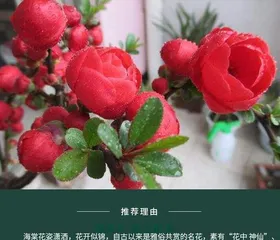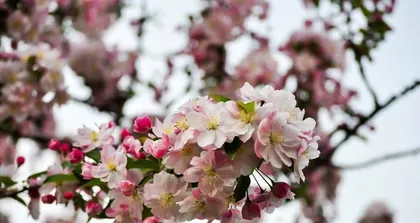Begonia is a very beautiful flower, suitable for planting in spring, summer, and autumn, but special attention needs to be paid to its care during winter. This article will introduce how to care for begonias from multiple aspects, helping you create a healthy begonia garden.

I: Basic Introduction of Begonia
Begonia is a deciduous tree plant with slender branches, long oval leaves, and colorful flowers. It is one of the popular ornamental flowers.
II: Winter Environmental Requirements for Begonia
Begonia likes an environment with sufficient sunlight, moist air, and appropriate temperature. Therefore, attention needs to be paid to its light, water, and temperature requirements during winter.

III: Winter Watering Techniques for Begonia
Begonia grows slowly in winter, so watering needs to be controlled. Do not let the soil become too wet, nor too dry; just maintain moderate moisture.
IV: Winter Light Precautions for Begonia
Sunlight is insufficient in winter, so it is necessary to provide adequate light for begonias. This can be achieved by moving them to a better position or using artificial lighting.
V: Winter Temperature Requirements for Begonia
Begonia needs to grow at lower temperatures, but not too low. The most suitable temperature range is between 5°C and 10°C. If the temperature is too low, it may cause flowers to wilt or the entire plant to be damaged.

VI: Winter Cold Protection Techniques for Begonia
To protect begonias from the cold in winter, we need to take corresponding cold protection measures, such as covering with protective materials and improving ventilation.
VII: Winter Fertilization Methods for Begonia
Begonia grows slowly in winter, so frequent fertilization is not needed. You can appropriately increase the content of elements like nitrogen, phosphorus, and potassium to ensure the healthy growth of the plant.
VIII: Winter Disease Prevention and Control Techniques for Begonia
Begonia is susceptible to pests and diseases in winter, so prevention and control measures are needed, such as promptly cleaning up pests and diseases and maintaining good ventilation.
IX: Winter Pruning Precautions for Begonia
Winter is the dormant period for begonias. At this time, appropriate pruning is needed to trim off withered and diseased branches and leaves to ensure the healthy growth of the plant.
X: Winter Transplanting Techniques for Begonia
Winter is not suitable for transplanting begonias because the plant grows slowly during this period, and transplantation may damage the plant.
XI: Winter Insulation Methods for Begonia
To ensure the growth of begonias in winter, we need to take some insulation measures, such as thickening the covering protective material and using greenhouses.
XII: Winter Irrigation Precautions for Begonia
In winter, begonias grow slowly, so it is necessary to reduce the frequency and amount of irrigation to prevent problems like pests and diseases caused by overwatering.
XIII: Winter Pest and Disease Prevention Techniques for Begonia
In winter, begonias are easily attacked by some pests and diseases, such as aphids and powdery mildew. Therefore, timely prevention and control measures are needed to ensure the health of the plant.
XIV: Key Points of Winter Nutrient Management for Begonia
In winter, begonias grow slowly, so proper nutrient management is needed, such as controlling the amount of fertilizer and providing adequate water.
XV: Conclusion
Begonia is a very beautiful flower, and it requires more careful care in winter. We hope this article can provide you with some useful tips to help your begonias grow healthily even in winter.